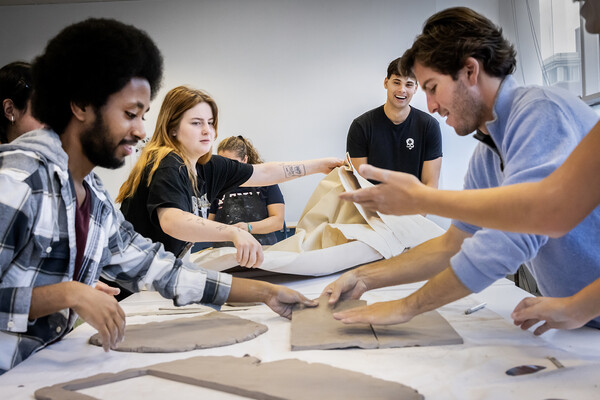Penn IUR/Perry World House confab discusses sustainable global urbanization
What is sustainable global urbanization? Eugenie Birch, co-director of the Penn Institute for Urban Research (Penn IUR) and the Lawrence C. Nussdorf Professor of Urban Education & Research at PennDesign, defines it as “creating or adapting cities so they use less energy, so they’re socially inclusive, and so they are prosperous.”
“How do we translate that?” she asks. “By assisting cities to become less sprawling, more built up.”
As the worldwide population expands—today’s 7 billion is expected to increase by at least 2 billion by 2050, according to the U.S. Census Bureau—cities around the world grapple with questions about their growth and prosperity. Does a population grow in conjunction with economic development or in a silo that keeps poverty increasing at a parallel rate? What is the impact of climate change?
According to the United Nations, half of the current global population lives in cities. By 2030, that number is expected to increase to 60 percent. And despite the fact that cities use up just 3 percent of the world’s total land, they generate nearly three-quarters of carbon emissions.
How cities move forward will affect every person on the planet, says Susan Wachter, co-director of Penn IUR and the Albert Sussman Professor of Real Estate and Finance at the Wharton School.
“We could build out the Earth in a way that will bring more than a billion people out of extreme poverty,” she says. “It’s up to this generation of practitioners and policy makers.”
Penn IUR hosted a panel discussion on this complex, intercontinental topic on Nov. 4, its first of several collaborations with Perry World House, the University’s new hub for global engagement and international policy research.
Keynote speaker Jeffrey Sachs, director of Columbia University’s Earth Institute and of the U.N. Sustainable Development Solutions Network, reported that in spite of current efforts, and particularly if no interventions are enacted, keeping the globe from warming more than 2 degrees Celsius—the limit climate scientists agree will prevent the most dire consequences—will continue to pose serious challenges.
“There was a real energy and enthusiasm for talking about these issues, for thinking about them seriously, for trying to find new solutions,” says William Burke-White, a Penn Law professor and the inaugural director of Perry World House. “The room itself felt upbeat despite the prognosis.”
One kernel of hope is U.N. Sustainable Development Goal (SDG) No. 11, which focuses on making cities “inclusive, safe, resilient, and sustainable.” The U.N. adopted this goal on Sept. 25. In December, countries will gather in Paris for COP21, the U.N. climate conference often described as a bookend to the SDGs.
Some cities are already moving toward making its requirements a reality, Wachter says, such as Bogota, Colombia, and many in China.
“In Addis Ababa, Ethiopia, there are early results that seem promising,” she adds.
For people in the field like Wachter and Birch, this is a momentous time.
“We’re at a historic moment,” Birch says. “It will be interesting to watch the next few months how nations, states, and local governments begin to negotiate their roles in addressing these concerns.”







